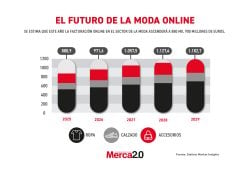According to a recent report by Oracle Retail in collaboration with Deloitte and MIT Technology Review Insights, customer expectations are evolving rapidly in the era of the phygital experience, where online and in-person shopping converge. The report reveals that 66% of customers expect brands to approach them with discounts, 44% anticipate receiving offers for items they have purchased before, and 32% are interested in predictions for items they might like.
In response to this constant demand for personalization, retailers find themselves overwhelmed. In a landscape dominated by the phygital experience— the seamless blend of online and in-person shopping where digital and physical worlds interact—retailers are challenged to keep pace and deliver a highly personalized omnichannel experience. Simultaneously, brand values and commitments to issues like sustainability and social impact are becoming as crucial to consumers as the products and services themselves.
This is a clear call for many retailers to shift their focus, or if not done yet, adopt a customer-centric vision entirely. The study revealed that retailers are burdened by legacy technology that is expensive to maintain and challenging to reconfigure. Labor shortages continue to hinder their efforts to embark on new projects, and pandemic-induced shocks are still felt in the form of supply chain disruptions and delivery delays.
“While it is imperative to shift the focus to deliver a truly omnichannel experience for consumers, retailers face several obstacles on this path,” says Pablo Verrastro, VP of Sales Oracle Retail Latin America. “The good news is that there are ways to adopt a more customer-centric business model while addressing labor and technological challenges,” he emphasizes.
To achieve this, retailers need better planning and leverage technology to tackle four main challenges:
-
Managing Growing and Changing Consumer Expectations
Today’s customers expect consistent and connected experiences across all touchpoints, combining the best of both worlds to make their interactions seamless, interactive, and personalized. This is achieved by getting closer to customers to understand their behavior and aligning overall business strategies, such as financial and merchandise plans, focusing on personalized offerings. Ensuring a comprehensive view of real-time financial data is crucial to delivering products in the right place and at the right time, analyzing customer data, integrating it with loyalty programs to offer exactly what customers are seeking.
Specific industry solutions, like Oracle Retail Marketing & Loyalty, provide retailers with specific customer insights derived from segmentation analysis, demographic data, shopping basket, product affinity, and promotion performance analysis. This allows retailers to design marketing programs that drive conversions. Thus, creating meaningful physical and digital shopping experiences with a real-time view of customer actions and needs at every step of their journey.
-
Improving Supply Chain Control
The challenge is to avoid the effects of economic uncertainty and address supply chain disruptions by ensuring end-to-end functionality while reducing costs and optimizing processes. This can be achieved by using integrated and retail-specific AI and machine learning to optimize inventory planning, manage orders and logistics, maximize sales, reduce costs, and identify alternative delivery methods contributing to greater brand transparency aligned with ESG goals.
Several solutions are available to contribute to these tasks. Oracle Retail Merchandising identifies marketing opportunities across all touchpoints, including pending orders, returns, best sellers, demand, fulfillment, and price and promotion analysis. Retail Planning & Optimization maximizes forecast accuracy for the entire product lifecycle with scientific knowledge combined with exception-based processes. Retail Supply Chain Management optimizes operations by reducing working capital, inventory, focusing on supply chain processes for omnichannel fulfillment—enabling seamless management of transportation, global trade, and distribution to maximize order fulfillment and minimize costs while adapting to business disruptions and unexpected changes in the supply chain.
-
Talent Management
Identifying the best strategies to retain valuable talent and recruit the right profiles that accompany business evolution is crucial. It is possible to generate more revenue by hiring the right person for the right job and using strategies like gamification to motivate employees to keep working happily.
Tools like Oracle Human Capital Management, for example, allow assigning new employees a personalized task list and an easy-to-follow onboarding process, all in one place that can be completed from any device. It also enables creating flexible workforce plans and hypothetical models to adapt to changing store environments and understand the impact of personnel decisions.
-
Commitment to Sustainability
Demonstrating transparency and consistency regarding sustainability commitments and ESG goals is not optional but essential for retailers today. Visualizing and reinforcing a commitment to sustainability—such as tracing a product to prove its origin and provide more transparency—contributes to both external customer and internal stakeholder credibility.
Thanks to solutions like Oracle Retail Brand Compliance, a retailer can assess suppliers and their ethical, environmental, safety, and quality performance to protect its brand from supply chain risks and improve sustainability. Additionally, risks can be reduced by tracking and monitoring items down to their batch and serial number using Intelligent Track & Trace, swiftly removing at-risk products from shelves and avoiding the sale of unsuitable items. With built-in blockchain technology, supply chain management efficiencies can be achieved by allowing visibility at multiple levels throughout the circuit.
“Having the support of a comprehensive cloud-based technology platform that enables innovation and evolution toward a holistic view of the customer, inventory, and operations is the key to successfully facing the multiple challenges presented today and moving towards a modern retail experience that goes even beyond the expected,” concludes Verrastro.










